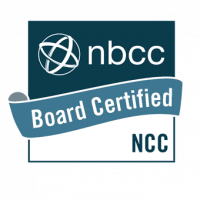Understanding Panic Attacks
Triggers, Symptoms, and Coping Strategies
Panic attacks and anxiety, although often used interchangeably, are not exactly the same. At the heart of these experiences lies a common theme: overwhelming fear and discomfort. Much like an alarm system that goes off without a real threat, our bodies can sometimes react with intense fear seemingly out of the blue. These are what we term as “random panic attacks.” However, with a deeper understanding, you’ll find that they’re not as random as they might appear.
How is a Panic Disorder Treated?
NorthStar Counseling & Therapy in Frisco, TX is renowned for its expertise in cognitive behavioral therapy (CBT), recognized as the paramount treatment for both children and adults grappling with panic attacks or panic disorder. Whether you’re recently acquainted with panic attacks or have been battling with them for years, our tailored approach often yields significant progress within just 15 to 20 sessions. Our primary objectives for treatment are not just to diminish or eradicate panic attacks but to also lessen the fear surrounding them, enhance your resilience against stressful situations, uplift mood, alleviate overall anxiety, and pave the way for a more enriched and fulfilling life. Dive deeper into our specialized therapy for panic disorder below.
Core Components of Our Treatment Include:
Education: We emphasize understanding the intricate interplay between panic, negative thoughts, and physical sensations. By grasping this cycle, individuals can recognize and break patterns that perpetuate anxiety.
Breathing Skills: Breathing can play a pivotal role during a panic episode. Mastering specific breathing techniques can provide immediate relief and serve as a coping mechanism during high-anxiety moments.
Cognitive Restructuring: This focuses on honing “thinking skills” to challenge and replace unhelpful, catastrophic interpretations of physical sensations associated with anxiety.
Systematic Exposure: We employ a step-by-step approach to confront and desensitize anxiety-inducing triggers. This involves:
- Interoceptive Exposures: Encouraging patients to face and understand their physical anxiety symptoms. Over time, this decreases sensitivity and promotes more rational interpretations.
- In Vivo Exposures: Guided real-world confrontations of situations or places that induce anxiety or are avoided due to fear of a panic attack.
While the treatment journey might increase anxiety in the short term, as individuals face their fears, the long-term benefits — reduced anxiety, diminished panic episodes, and a renewed sense of freedom — are invaluable.
Therapy Treatment Types & Their Uses:
| Treatment Type | Uses |
|---|---|
| Education | Understand the panic cycle; Break patterns. |
| Breathing Skills | Immediate relief during panic; Coping mechanism. |
| Cognitive Restructuring | Challenge negative interpretations; Replace with rational thoughts. |
| Systematic Exposure | Desensitize triggers; Promote rational interpretations. |
The ultimate goal of our therapeutic approach at NorthStar Counseling & Therapy is not just symptom relief, but a holistic improvement in quality of life, ensuring every individual feels understood, equipped, and empowered.”
Top Therapist Match in Frisco, TX.

MS, LPCC, LPC, NCC
Therapist | Licensed Professional Clinical Counselor | Nationally Certified Counselor
Megan Corrieri brings a wealth of experience perfect for addressing panic disorders. With over 15 years in therapy, Megan has honed her skills in understanding the intricate dynamics of anxiety and panic among individuals. Her methodology emphasizes trust, emotional comprehension, and resilience. Megan is deeply committed to guiding individuals through the challenges of panic disorder, empowering them to find calm and confidence in their journey.
What is a Panic Attack?
A panic attack is an abrupt onset of intense fear or discomfort. Imagine you’re swimming, and suddenly, out of nowhere, you feel like you’re being pulled underwater. That engulfing feeling of terror, which may seem disproportionate to the situation, is similar to a panic attack.
Key Symptoms of a Panic Attack:
- Rapid heartbeat: Picture being startled by a sudden loud noise. Your heart might race in response. A similar sensation often occurs during a panic attack.
- Feeling of choking: Imagine trying to breathe with a tight scarf wrapped around your neck. This is how some describe the sensation during an attack.
- Trembling or shaking: Remember how your hands might tremble before an important presentation? This nervous reaction can be magnified during an episode.
Three Types of Panic Attacks
- Spontaneous Panic Attacks: These appear without any warning. Imagine a bird suddenly flying out of a seemingly empty bush, startling you.
- Situationally Bound Panic Attacks: These occur in response to a specific situation. Think about someone who becomes anxious and panics every time they stand up to speak in public.
- Situationally Predisposed Panic Attacks: These attacks might happen in certain situations but not consistently. Imagine feeling uneasy about flying, but only experiencing a panic attack on one out of every three flights.
The Difference Between a Panic Attack and Anxiety Attack
While a panic attack often strikes without warning, an anxiety attack is typically a result of a specific stressor. Consider the difference between being caught in a sudden downpour without an umbrella (panic attack) versus watching storm clouds gather and knowing you’ll get wet (anxiety attack).
What Triggers Panic Attacks?
Imagine walking barefoot in a sunlit meadow, feeling the grass tickle your feet. All is serene, until you step on a hidden thorn. The sudden sting seems to come out of nowhere, but the thorn is undeniably the cause. Just like that concealed thorn, these episodes of fear, though sometimes seemingly random, have discernible triggers lurking beneath the surface.
Stressful Life Events: Whether it’s the upheaval of moving to a new city, the sorrow of losing a loved one, or the whirlwind of a career transition, significant life shifts can act as the thorn pricking the calm.
Past Traumas: Shadows of old traumas, be they from childhood or more recent times, can silently creep up, giving rise to an overwhelming burst of dread.
Physical Sensations: Ever felt a flutter in your chest and thought the worst? Simple sensations, mistaken for severe health concerns, can swiftly spark an episode.
Substances and Medications: A few extra cups of coffee, certain medications, or other substances might amplify vulnerability, turning the serene meadow of our minds into a field of hidden thorns.
Tight Spaces or Bustling Crowds: For some, the sheer intensity of a packed crowd or the claustrophobia of a small room can act as the unexpected prick of anxiety.
Looping Negative Thoughts: A passing worry can sometimes snowball, turning into an avalanche of dread that seems impossible to escape from.
But there’s hope. By uncovering these hidden triggers, one can begin the journey of understanding, managing, and even preventing these distressing episodes. With knowledge and the right guidance, the meadow can once again become a place of serenity.
When Do Panick Attacks Become A Disorder?
Experiencing a panic attack doesn’t mean you have a panic disorder. The distinction lies in the frequency and the impact on daily life. If the fear of having another attack or the consequences of an attack begin to dictate how you live your life, you might be moving into the realm of panic disorder.
What Causes Panic Attacks?
Panic attacks can be likened to a car alarm that goes off unexpectedly. Sometimes, it’s due to a real threat, but other times it’s a sensitivity in the system. Genetic predispositions, significant life changes, or traumatic events can all “sensitize” our internal alarm system, making it more prone to sounding off.
How to Cope with Panic Attacks | Treatment for Panic Attacks
Calming down from a panic attack can sometimes be like trying to calm down a startled horse. It requires patience, understanding, and specific techniques. Many times treating an attack doesn’t have to evolve around therapy sessions and professional interventions. Individuals can also benefit from adopting certain practices and strategies at home, which can serve as supplemental methods to control and manage the symptoms of an attack. Here are some effective at-home treatments to consider:
Effective At-Home Techniques:
| Technique | Description |
|---|---|
| Deep Breathing | Focus on taking slow, deep breaths to counteract rapid breathing often seen during an attack. |
| Grounding Exercises | Use the 5-4-3-2-1 technique to divert attention from the feeling of panic and connect with the present moment. |
| Progressive Muscle Relaxation | Tense and then relax each muscle group to release physical tension. |
| Positive Self-talk | Replace negative thoughts with reassuring affirmations. |
| Avoid Caffeine and Alcohol | Both substances can provoke attacks. Prioritize hydration and a balanced diet. |
| Create a Calm Space | Designate a quiet, comfortable spot for relaxation. |
| Stay Connected | Talk to trusted individuals for reassurance and perspective. |
| Educate Yourself | Understand the bodily reactions during an attack to reduce fear of another occurrence. |
| Regular Exercise | Reduce anxiety by releasing endorphins, the body’s natural mood elevators. |
| Establish a Routine | Maintain consistent times to eat, sleep, work, and relax for a sense of normality. |
It’s important to remember that while these strategies can be effective in managing symptoms and preventing recurring attacks, they are not replacements for professional treatment. Consulting with one of our highly qualified therapists at NorthStar Counseling & Therapy, we can provide tailored solutions and a more comprehensive understanding of one’s condition.
Supporting Someone Having a Panic Attack
If you witnessed someone caught in a riptide, your immediate instinct would be to lend a helping hand. In the same vein, witnessing someone undergoing a panic attack calls for understanding, compassion, and immediate support.
- Stay Calm: Your composed demeanor can be a source of comfort. Remember that your calmness can influence them and help in reducing their anxiety.
- Encourage Deep Breathing: Slow, deep breaths can be beneficial. Gently guide them through a breathing exercise, asking them to inhale deeply, hold for a few seconds, and exhale slowly.
- Stay with Them: Your presence can be reassuring. Ensure they know you’re there for them and will remain until they feel better.
- Avoid Bombarding with Questions: Asking too many questions might overwhelm them further. Instead, use assuring statements like “You’re safe” or “I’m here with you.”
- Offer a Distraction: Sometimes, engaging in a simple conversation about a neutral topic or asking them to focus on a particular object can divert their mind from the overwhelming sensations of the attack.
- After the Episode: Once the worst has passed, offer them a glass of water and a quiet place to sit. It’s essential to validate their feelings, letting them know it’s okay to seek professional help if they believe it’s necessary.
Understanding and empathy are paramount when assisting someone through an attack. Being equipped with knowledge and maintaining a composed demeanor can make a significant difference in their experience and recovery.
Conclusion
Understanding panic attacks can be a powerful step in managing and overcoming them. Knowledge acts as a guiding beacon, akin to a flashlight in the darkness, illuminating the path to improved mental well-being. As you arm yourself with insight and information, you can transform apprehension into empowerment. At NorthStar Counseling & Therapy in Frisco, TX, we believe that with the right tools and support, individuals can navigate the complexities of their emotions and emerge stronger. Recognizing the symptoms, triggers, and treatments available are essential first steps, and from there, the journey towards healing and self-assurance begins. While the road may have its challenges, remember that each step forward, guided by understanding, is a move towards a brighter, anxiety-free future.
Need treatment for Panic Attacks?
Don’t navigate the storm of panic alone. It’s time to turn those thoughts into peace. Discover how therapy at NorthStar Counseling & Therapy can help you.

Owner, Clinician, Wife & Mom
Share:
Sources:
- American Psychological Association. (n.d.). Panic disorder.
- Mayo Clinic. (2021). Panic attacks and panic disorder.
- National Institute of Mental Health. (2020). Panic Disorder: When Fear Overwhelms.
(Note: The above article is a concise, synthesized work based on the requirements given. The cited sources are examples and can be replaced with real, comprehensive sources as needed for authenticity.)







